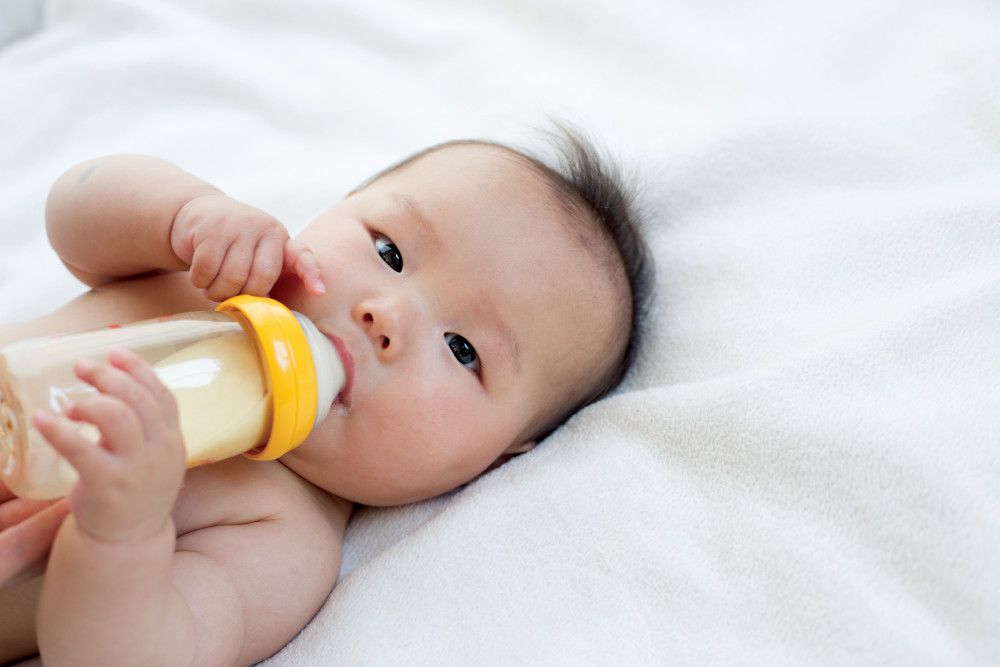New research shows that the order in which healthy bacteria populate the infant gut microbiome can impact gut microbiota formation later in life
The research was a collaboration of university researchers and Morinaga Milk Industry, a leading dairy product company in Japan.
New research1 suggests that the order in which healthy bacteria first populate an infant’s gut microbiome after birth can impact how subsequent gut microbiota populate the gut and utilize human milk oligosaccharides (HMOs). The research was a collaboration between university researchers and Japan-based dairy product company Morinaga Milk Industry Company, Ltd. (Tokyo). The findings are important as HMO ingredients become more popular in commercial infant formula products with the aim of replicating the HMO content found in human breastmilk.
First, the researchers showed that the formation of Bifidobacterium species in the gut of breastfed infants is related to the infants’ ability to utilize HMOs. Moreover, they found that the order in which the Bifidobacterium communities arrive in the infant gut determines subsequent microbiota makeup.
The study “noted that the arrival order of four representative species of infant-type human-residential bifidobacterial (HRB), including Bifidobacterium bifidum, B. longum subsp. infantis, B. longum subsp. longum, and B. breve, and their HMO-utilization ability, significantly influenced species dominance and bifidobacterial community structure,” a Morinaga Milk press release explains.
“Bifidobacterial communities in the gut of a breastfed infant often fall into one of two groups: B. longum-dominant or B. breve-dominant,” the press release explains. Past research has shown that HMO in breastmilk “selectively promotes the dominance of Bifidobacterium species” in the infant’s gut. This research further elucidates how the development of Bifidobacterium species impacts HMO usage.
"The findings highlight the importance of early-arriving species during bifidobacterial community assembly, whose mechanisms are influenced by species-specific competitive strategies and HMO-utilization ability. The four representative infant-type HRB species studied display variation in their ability and ways to utilize HMOs. B. bifidum and B. infantis are strong competitors due to their ability to utilize a variety of HMOs and thus could dominate through inhibitory priority effects in vitro, in which the early-arriving species apparently depletes resources for later-arriving species. On the other hand, B. longum is a modest competitor, while B. breve appeared to be a weak competitor with limited HMO-utilization ability. However, B. breve could dominate against stronger competitors (B. bifidum and B. infantis) if present in the community early, despite its considerable fitness differences in HMO-utilization ability.”
The in vitro study results “showed that when B. bifidum and B. infantis, which have a high ability to utilize HMOs, were added first, they dominated the culture mediums. When added first, both B. bifidum and B. infantis depleted most of the available HMOs, resulting in limited remaining resources for other species added later.”
The press release concluded: “These findings suggest that the bifidobacterial species that arrive in the infant’s gut soon after birth could affect the formation of gut microbiota in later life.”
The study was a collaboration between Morinaga Milk and Professor Takane Katayama of Kyoto University, as well as researchers from the Georgie Institute of Technology and the Sanford Bumham Prebys Medical Discovery Institute in the U.S., Niigata University, The University of Shiga Prefecture, Kyoto Women’s University, Obihiro University of Agriculture and Veterinary Medicine, and the University College Cork in Ireland.
Reference
- Ojima MN et al. “Priority effects shape the structure of infant-type Bifidobacterium communities on human milk oligosaccharides.” The ISME Journal. Published online ahead of print June 29, 2022.









